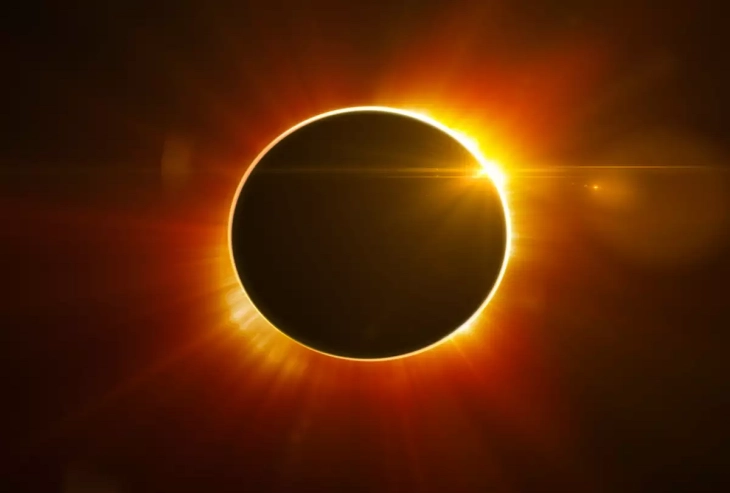Total solar eclipse excitement builds for millions in North America
- Anticipation is building in Mexico, the United States and Canada ahead of Monday's total solar eclipse that will have millions of people looking skyward to marvel at the rare spectacle.

New York, 8 April 2024 (dpa/MIA) - Anticipation is building in Mexico, the United States and Canada ahead of Monday's total solar eclipse that will have millions of people looking skyward to marvel at the rare spectacle.
The drama occurs when the moon passes between Earth and the sun, fully blocking the sun's face and turning day into night. What looks like a fiery ring will been seen outlining the moon.
Beginning over the Pacific Ocean, the eclipse will move into northern Mexico, cross the US in the afternoon from Texas north-eastwards to Maine, and then graze south-east Canada before coming to an end over the North Atlantic.
The narrow corridor includes major cities such as Dallas, Indianapolis, Buffalo and Montreal, with a total population of more than 30 million people.
Eclipse chasers have travelled from far and wide to be in the path of totality and experience what US space agency NASA is calling a "cosmic masterpiece."
"Eclipses have a special power. They move people to feel a kind of reverence for the beauty of our universe," NASA chief Bill Nelson said at recent news conference.
The last total solar eclipse in the US occurred in August 2017, in Mexico in 1991 and Canada in 1979.
After Monday, North America will not see another until 2044.
Preparations have been under way for months: Parties are planned in many places for crowds to watch together, at which special glasses to protect the eyes will be distributed. Numerous schools in districts from which the total solar eclipse can be observed have announced that they will close.
Millions of people living elsewhere have reserved holidays. Hotels and flats in the eclipse zone are fully booked in many places and the authorities are warning of very heavy road traffic.
However, the weather outlook is not particularly good. For the US, clouds, rain and storms are predicted in many regions, with the best views expected in the north-eastern states.
Scientists have also geared up with NASA observing, recording and measuring the solar eclipse using aeroplanes and balloons.
Mexico's Pacific coast will be the first to see the eclipse at 11:07 am (2009 GMT), NASA said.
Photo: MIA archive







